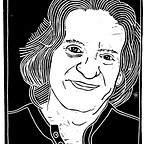The Insane Propaganda of the Temperance Movement
The temperance movement can be traced back to 1784 when Dr. Benjamin Rush first declared alcoholism “a disease.” He made the connection between the poor and sick and how much alcohol they consumed. In the 1820s, a new movement with strong religious connections claimed that alcohol led to crime, sin and ultimately Hell. The American Temperance Society was formed in 1826 and “demon rum” became their primary target. By 1830, the average American man over 15 years old consumed seven gallons of pure alcohol a year (three times today’s average).
Temperance was popular among abolitionists who viewed alcohol as an evil commensurate with slavery. The movement was rooted in America’s Protestant churches. They urged moderation, then voluntary abstinence and finally government prohibition. Maine was the first state to ban alcohol sales and consumption in 1851. (Maine remained dry until passage of the 21st amendment.)
The popular artist Nathaniel Currier created a lithograph called The Drunkard’s Progress. The chart featured the nine stages of a drinker. Stage 1 was called “glass with a friend.” Stage 4 was “drunk and riotous.” Stage 6 was “poverty and disease.” Stage 8 was “desperation and crime.” The final stage was “death by suicide.”
After the Civil War, Europeans migrated en masse to America. The Germans and Irish had…
